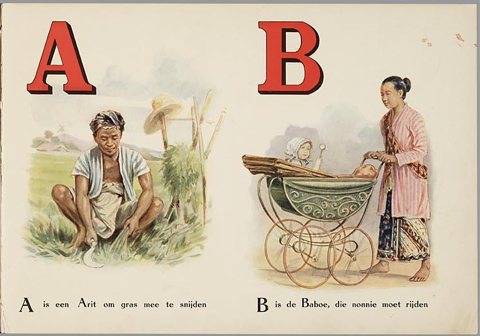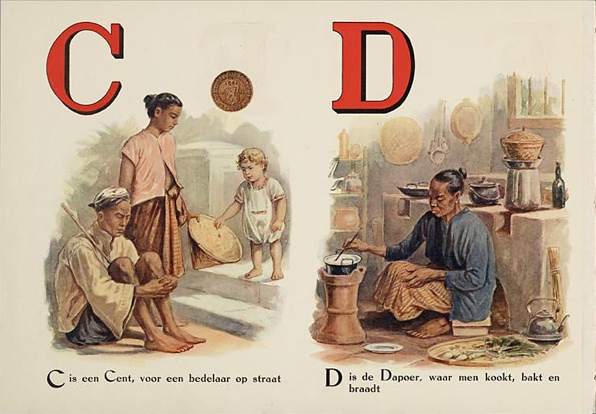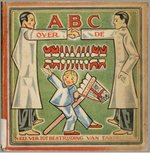
Make no small web plans. The ambitiously titled site, "The Memory of the Netherlands" combines nearly 400,000 objects from 67 different collections, including selected scans of nearly 700 illustrated books from 1810 to 1950. The 1925 Nieuw Indisch ABC is an instant classic of the "whoops, but hegemonic colonialism seemed like a good idea at the time" school of children's literature:
The alphabet book provides one of the classic frameworks for kids to begin to understand the world around them. For Dutch babies in the East Indies in the early 20th century, that means all sorts of brown people are subservient to you:
"A is for Arit [1] which cuts the grass" and "B is for Baboe the nanny"

If those aren't awesomely exploitative enough for you, just check out C & D:
[1] as noted in the comments, "arit" is a sickle, not a gardener. I confess, when I hit the wall on a translation, I figured it followed the baboe/nannie bedelaar/beggar structure. thanks, Lieve.

"C is for cent you give to the beggar on the street," and "D is for Dapoer [kitchen] where they cook and bake bread."






The first translation is a bit wrong - Arit is a sickle you cut the grass with, not the name of the person.
Not that it makes this book any less wrong ...